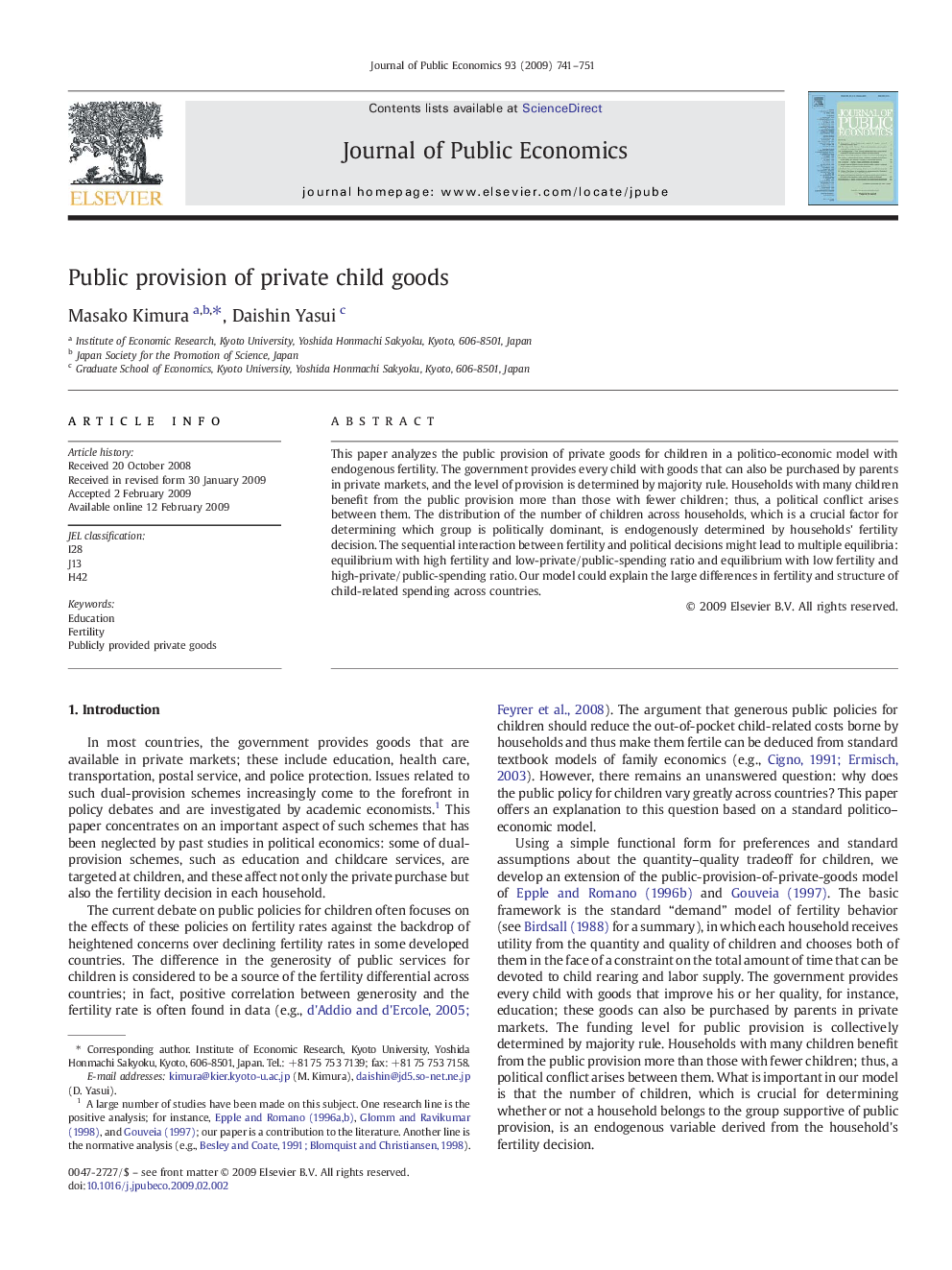| Article ID | Journal | Published Year | Pages | File Type |
|---|---|---|---|---|
| 969470 | Journal of Public Economics | 2009 | 11 Pages |
This paper analyzes the public provision of private goods for children in a politico-economic model with endogenous fertility. The government provides every child with goods that can also be purchased by parents in private markets, and the level of provision is determined by majority rule. Households with many children benefit from the public provision more than those with fewer children; thus, a political conflict arises between them. The distribution of the number of children across households, which is a crucial factor for determining which group is politically dominant, is endogenously determined by households' fertility decision. The sequential interaction between fertility and political decisions might lead to multiple equilibria: equilibrium with high fertility and low-private/public-spending ratio and equilibrium with low fertility and high-private/public-spending ratio. Our model could explain the large differences in fertility and structure of child-related spending across countries.
